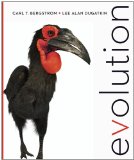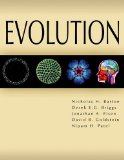Evolution
- A macroevolutionary perspective on species range limits

- Alfred Russel Wallace Page - English naturalist, evolutionist, and social critic
- Anatomical and ecological constraints on Phanerozoic animal diversity in the marine realm

- BBC Evolution website
- BGYB50Y Ecology and Evolutionary Biology
- Biotic crisis and the future of evolution

- Bob Riggin's Essays on Evolution
- Charles Darwin Foundation for the Galapagos Islands
- Clades reach highest morphological disparity early in their evolution

- Climate Change as a driving force for evolution

- CommunityZero - Evolution Chat and Discussion Center
- Conference on Evolutionism and Rationalism. Zaragoza (Spain)
- Creation "Science" Debunked
- Die Evolution dargestellt anhand von Fossilien
- Diversity, Endemism, and Age Distributions in Macroevolutionary Sources and Sinks

- Documenting a significant relationship between macroevolutionary origination rates and Phanerozoic pCO2 levels

- Ecology and Evolution Biology 301
- Enter Evolution Theory and History
- Essays on Evolution
- Evidence for Evolution

- Evolution
- Evolution at NYU Course Material
- Evolution Happens!
- Evolution Models
- Evolution Research News
- Evolution Web
- Evolutionary Innovations in the Fossil Record: The Intersection of Ecology, Development, and Macroevolution

- Evolutionary macroecology and the fossil record

- Evolutionary Theory Web Site
- Evoluzione (in italian)
- Evolutionist
- Exploring macroevolution using modern and fossil data

- Global biodiversity and the ancient carbon cycle

- In Defense of Evolution
- In the light of evolution II: Biodiversity and extinction

- Island Biogeography and Evolution Solving a Phylogenetic Puzzle
- Lefalophodon: an informal history of evolutionary biology Web site
- Macroevolution
- Micro- and Macroevolution: Scale and Hierarchy in Evolutionary Biology and Paleobiology

- Modified application of Perron's theorem to evolutionary and palaeoecological studies of invertebrates in palaeobiology

- Morphological and developmental macroevolution: a paleontological perspective

- Origin of the Eumetazoa: Testing ecological predictions of molecular clocks against the Proterozoic fossil record

- Phanerozoic marine biodiversity dynamics in light of the incompleteness of the fossil record

- Quality of the Fossil Record: Implications for Evolutionary Analyses

- Random walks in the history of life

- Scale and Hierarchy in Macroevolution

- sci.bio.evolution
- Speciation
- Species Selection: Theory and Data

- Student Papers on Evolution
- Talk Origins
- Two-phase increase in the maximum size of life over 3.5 billion years reflects biological innovation and environmental opportunity

- UCMP - A History of Evolutionary Thought
Books about evolution
| Evolution, Second Edition Evolution, Second Edition is a comprehensive treatment of contemporary evolutionary biology that is directed toward an undergraduate audience. It addresses major themes including the history of evolution, evolutionary processes, adaptation, and evolution as an explanatory framework at levels of biological organization ranging from genomes to ecological communities. Throughout, the text emphasizes the interplay between theory and empirical tests of hypotheses, thus acquainting students with the process of science. Teachers and students will find the list of important concepts and terms in each chapter a helpful guide, and will appreciate the dynamic figures and lively photographs. The content of all chapters has been updated. Contributors Scott V. Edwards and John R. True have once again provided authoritative chapters on, respectively, Evolution of Genes and Genomes and Evolution and Development, two of the most rapidly developing subjects in evolutionary biology. A final chapter on Evolutionary Science and Creationism treats such topics as the nature of science and the practical applications of evolutionary biology. |
|
| Evolution Evolution makes the big themes in evolutionary biology accessible by introducing them early and integrating them thoroughly. Extensive, in-depth, current research examples, an emphasis on problem solving, and a stunning art program engage students, helping them to understand fundamental concepts and processes. |
|
| Evolution Evolution is a new book on evolutionary biology that elegantly synthesizes traditional evolutionary theories with contemporary concepts from genomics, developmental biology, human genetics, and other areas of molecular biology. As an innovative, interdisciplinary, and thoroughly integrated book on evolutionary biology with world-renowned author, Evolution thoroughly illuminates this major paradigm of modern science. Evolutionary principles are introduced with examples from across the spectrum of life - from ''jumping genes'' to RNA molecules, to populations of yeast and E. coli reared in the laboratory, to dung flies, lizards, and deer in their natural habitats. A section is also devoted to human evolution and diversity, merging recent insights from molecular techniques with paleontological evidence. Evolution is recommended as a primary textbook for undergraduate courses in evolution as well as for biologists seeking a clear, current, and comprehensive account of evolutionary theory and mechansms. |


